May 14, 2025 | 16:17 GMT +7
May 14, 2025 | 16:17 GMT +7
Hotline: 0913.378.918
May 14, 2025 | 16:17 GMT +7
Hotline: 0913.378.918
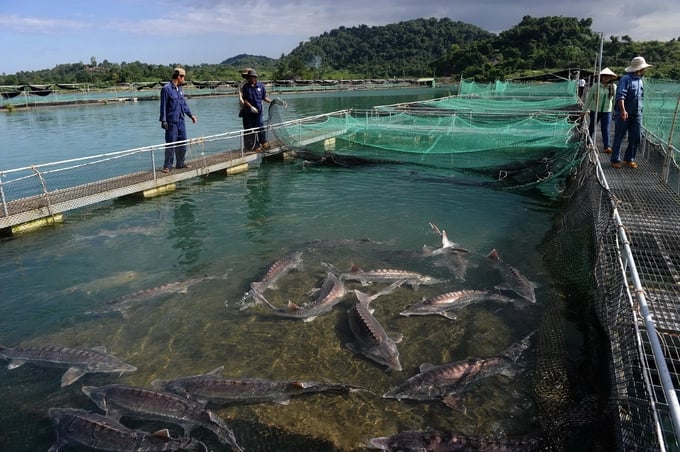
Vietnam has mastered the technology of producing coldwater fingerlings. Photo: PH.
Mr. Nguyen Thanh Hai, Director of the Research Center for Coldwater Fisheries (Research Institute for Aquaculture No 1), Vice President of the Vietnam Coldwater Fish Association, shared about the issue of fingerlings production in the development of coldwater fish farming in Vietnam. He said that Vietnam has mastered the technology of producing coldwater fingerlings. However, the fingerling production capacity can only meet about 20-30% of the market's demand, so we are still heavily dependent on imported fingerling sources.
Mr. Nguyen Thanh Hai said that this is due to coldwater fish in Vietnam being still new with little time to adapt and perfect the technological process, production capacity, infrastructure, investment, and science… Additionally, the current demand for coldwater fish farming is very large while the fingerling production facilities are still limited in terms of scale and investment.
There is currently a huge demand for coldwater fish in Vietnam. Every year, Vietnam still has to import tens of thousands of tons of salmon and sturgeon because the production capacity can only meet about 15-20% of the demand.
“To meet that huge demand, by 2030, fingerlings production needs to increase by 2-3 times. Vietnam currently can produce 2 million salmon and sturgeon fingerlings each year, by 2030, it needs to increase to 5-6 million fingerlings", Mr. Hai analyzed and forecasted.
The Vice Chairman of the Vietnam Coldwater Fish Association said that only businesses can aim for large production. The state needs to pay more attention to policy and finance while letting businesses focus on investment. These policy and finance activities include projects, preferential loan programs, and technology transfer training... They will help businesses in their operation.
In particular, for fingerling production, businesses need to invest in infrastructure and receive research technologies from other units... Only then will they have enough capacity to produce enough seeds to supply the market.
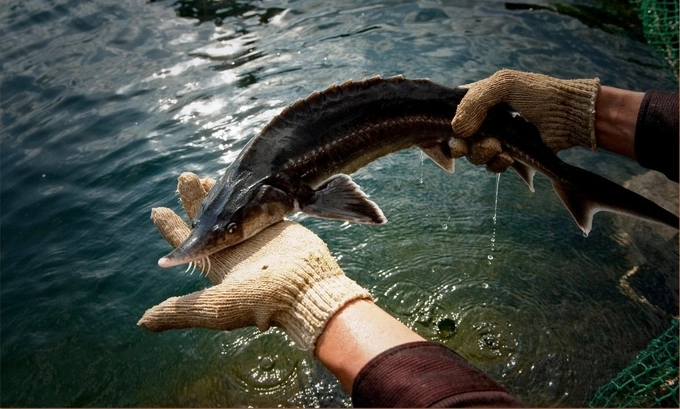
Vietnam needs to invest strongly and drastically to promote science and technology, fingerling production technology, and cold water fish farming technology. Photo: PH.
Besides, businesses all have long-term plans so the State can support in terms of quality management of commercial fish in the market; create conditions for enterprises to import and export. The State also supports administrative procedures to facilitate market access; supports advertising, communication, and trade promotion. In addition, the need for investment capital for coldwater fish farming is very large. The State can support loans with preferential interest rates.
Analyzing the experience of developing cold-water fish farming in China, Mr. Nguyen Thanh Hai said that China's current annual coldwater fish production is ranked first in the world. China is successful because they invest seriously and methodically in science and technology. The system of agricultural extension and communication is well-implemented and effective.
From the experience of China, a representative of the Vietnam Coldwater Fish Association said that Vietnam needs to start heavy investment. The country needs to drastically promote the elements of science and technology, fingerling production technology, and farming technology, and promote the market in research and development of cold water fish.
“Locals with great potential need to follow the development plan of the coldwater fish industry so that people and businesses can rest assured to invest in production. Local state management agencies need to take measures and sanctions to prevent unfair competition, " Mr. Nguyen Thanh Hai made recommendations.
With the results achieved, MARD sets a target in the fisheries sector strategy that by 2030, coldwater fish production meets 100% of domestic consumption demand and abroad. Coldwater caviar products reach from 5 to 1 ton/year with an export value of about $20-25 million.
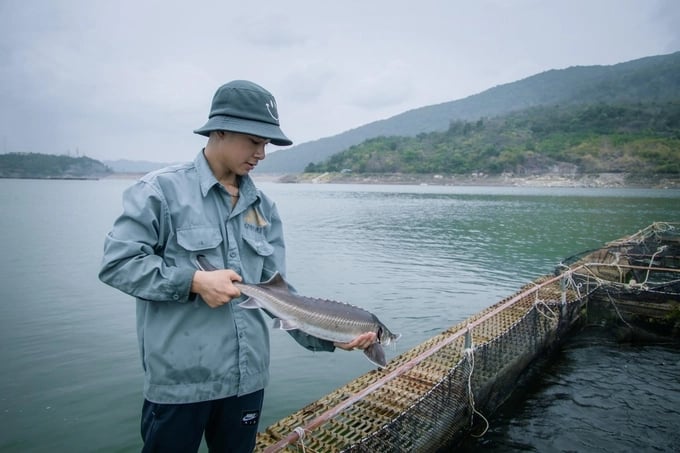
In Vietnam, after just 5 years of farming, sturgeon can be exploited for eggs. Photo: PH.
According to Mr. Kim Van Tieu, former Deputy Director of the National Agricultural Extension Center(MARD), Vietnam has favorable conditions for developing cold-water fish varieties due to the many climatic sub-regions.
As evidence for that, Mr. Kim Van Tieu analyzed, the same cold-water fish varieties, if raised in other temperate countries, after 1 year the fish will only reach about 1kg. But if farmed in Vietnam, the fish can give double the weight from 2 to 2.5kg.
Sturgeon caviar is a highly valued product in the world. In temperate countries, sturgeon needs 7-10 years to produce eggs. In Vietnam, after just 5 years of farming, sturgeon can be exploited for eggs.
“Those are the great advantages of Vietnam to raise coldwater fish. We can farm and export this product. We have exported sturgeon caviar, but with a small quantity, only about 3.5 tons/year", Mr. Kim Van Tieu emphasized.
Accordingly, to target the export of coldwater fish products, Mr. Tieu said that it is necessary to systematically reorganize the coldwater fish industry with a focus on businesses.
“According to the law of market economy, whoever grasps the market will be able to lead production. Only businesses can grasp the market, have output, and can produce according to consumers' needs and standards", the agricultural extension experts said.
Additionally, most of the current coldwater fish farming establishments are located in remote areas. However, those establishments have a source of quality cold water for fish farming. Mr. Kim Van Tieu said that the State should support infrastructure construction such as making roads and conducting electricity...
Coldwater fish farmers should not deploy small-scale models but they need to link them through businesses. They also need to change their thinking towards chain links to achieve high efficiency and create sustainable output.
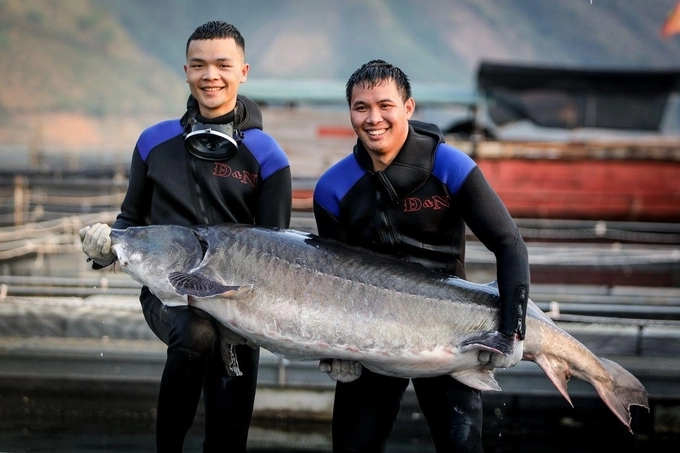
Coldwater fish farmers should not deploy small-scale models but they need to link them through businesses. Photo: PH.
The Deputy Director of the National Agricultural Extension Center said that coldwater fish farmers need to quickly change their mindset from curing disease to thinking about disease prevention before the fish become sick. This is so that aquaculture in general and coldwater fish, in particular, can develop sustainably.
At the same time, people should visit typical models before implementing the new model. In addition to learning useful knowledge, it is necessary to understand the difficulties and limitations of overcoming those weaknesses when deploying your model.
Preparing material conditions such as land, capital, technology, and spirits such as determination and enthusiasm is necessary before deployment.
“We have to do it from small to large, do it on a moderate, reasonable scale with reach and strength until we have enough intelligence and strength to start thriving in association with cooperatives or cooperative groups and businesses. That is the way to develop methodically and sustainably,” noted Mr. Kim Van Tieu.
Mr. Tieu also said that wherever you need to go, you need to record in the diary to get there to trace the origin. This is also to draw experience for the next season, to share knowledge between farmers and farmers, and between experts and farmers.
Finally, people need to be creative because the model in each place has different natural conditions and climates.
In recent years, the development of coldwater fish farming in the highlands has contributed to creating jobs, developing infrastructure, increasing incomes, and improving people's lives. It also helps protect national security in remote and border areas.
The evidence is that the production of coldwater fish farming has increased rapidly in recent years. If in 2007, after two years of bringing it back to Vietnam, the output was only 95 tons, in 2010 it increased to 450 tons. By 2015 the output is 1,500 tons and by 2020 it is estimated to reach about 4,000 tons. Growth of cold water fish in the period 2007-2020 averaged 68%/year.
Translated by Hoang Duy

(VAN) U.S. tariffs are not only a 'shock', but also an opportunity for Vietnamese businesses to renew their mindset toward comprehensive development.
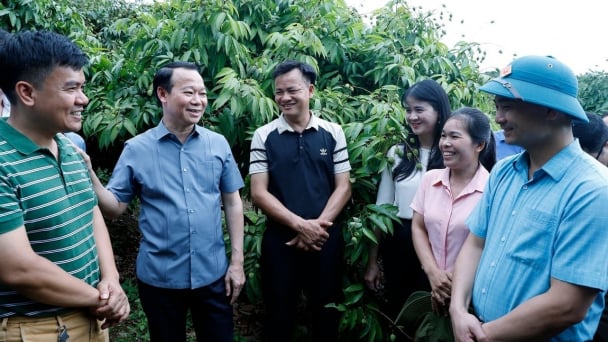
(VAN) As Bac Giang lychee enters the harvest season, Minister Do Duc Duy expects that the fruit will contribute greatly to agricultural exports due to standardized production and deep processing.
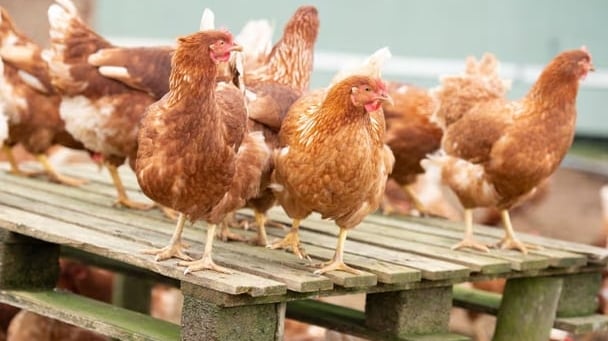
(VAN) Consumers have shown a preference for free-range eggs, but those farming systems are more vulnerable to biosecurity risks like bird flu.
/2025/05/09/5701-1-184335_301.jpg)
(VAN) Vietnam’s eel exports nearly doubled thanks to a mud-free farming model, opening up new prospects while still facing numerous barriers related to international standards.
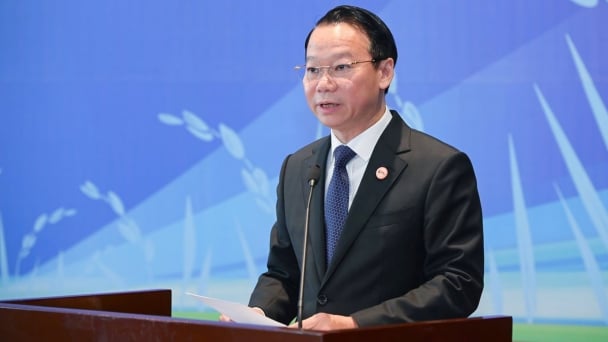
(VAN) Minister Do Duc Duy warned that if production is not professionalized and supply chains are not transparent, the U.S. market could become a growth bottleneck.
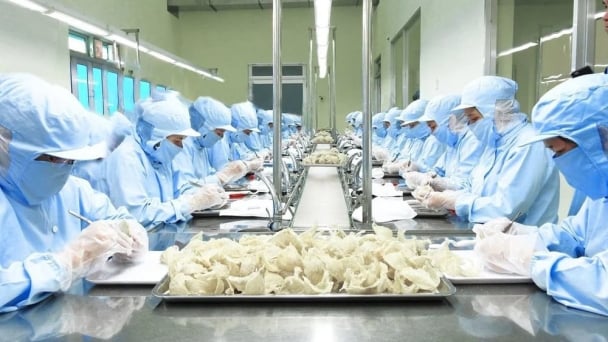
(VAN) Delegating surveillance responsibilities to local authorities is a cost-saving and efficiency-boosting measure that removes a key bottleneck for enterprises, according to Director General Duong Tat Thang.
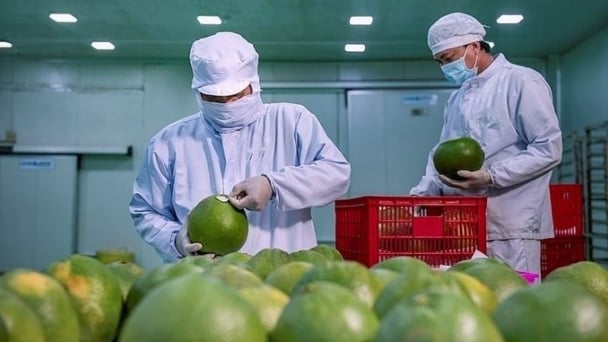
(VAN) Australia's final report on biosecurity has just been released, contributing to expanding the market for Vietnam's fruit with an output of nearly 1 million tons.